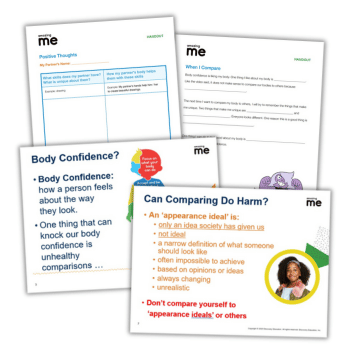A Token ‘Wellbeing Day’ Is Not Enough – Support Your Staff With Realistic And Practical Solutions

No more weekend emails, no more triple marking – how one school is helping with teacher workload
- by Andrew Cowley
- Former deputy headteacher and wellbeing in schools advocate Visit website

With wellbeing and workload high on the educational agenda, our small school has taken the initiative to make these issues a workplace priority.
We’ve done this via the following practical steps that recognise the pressures schools face in an era of cutbacks, all the while bearing in mind our six wellbeing principles (which you can find at the end of this article).
Time-saving planning
When it comes to planning, our key question is: who is the plan for? It should be for the teacher and the class, not the head or subject leader and certainly not Ofsted. Gone are the days of lessons being judged according to the plan and not the content.
Detailed evaluations aren’t needed either. Good teachers know their children and know what went well or otherwise in their lessons.
Detailed planning and resourcing, including flipcharts, take time. As a school we make use of a range of published materials which we annotate and adapt as we see fit. Because this reduces planning time, we can focus on resourcing and activities that promote learning.
No more triple marking
There is no escape from marking. It needs to be done and is an expectation of the role. However, triple marking, extensive comments, multiple pen colours, stamps and stickers might mean it takes three hours to mark one set of books. What is the use in writing ten lines of comments only for the child to ignore it or not be able to read it? We decided that marking is effective in the form of feedback. When marking writing we use simple symbols for spelling, grammar and areas for improvement.
We still employ pink and green highlighters as the children fed back that they found this useful.
Self-marking, peer marking and simple self-assessment also form part of our strategy.
Termly testing
When we still had levels, too much data was produced and, crucially, wasn’t used effectively for the benefit of the children and their progress. We have abandoned our web hosted recording system in favour of term-by-term testing of reading and maths using a reliable set of materials.
Standardised scores are trackable and don’t differ too greatly from scaled scores used in new statutory assessment. Teacher assessment alone would not provide this reliability and also burdens the teacher in tracking down evidence or designing activities which provide evidence rather than promote learning. We have also streamlined written reports and these are now produced mid-year so that teachers can focus on year end outcomes in the summer.
No weekend email
Staff receive a weekly email containing essential information such as dates for reports, parents evenings and events. Deadlines are given with plenty of notice; no meeting or event is a surprise. We ask staff not to read emails at evenings and weekends. If something is absolutely vital, we text or call.
Brevity always
Staff meetings are an hour in length at most. Support and lunch staff have their own dedicated meetings in school time with cover provided.
Team culture
We provide a team breakfast at diary briefings and a team lunch on Fridays. We’ve also bought a four pint teapot to provide a social focus at lunchtime.
Someone is always keen to bring in cake too! We have jovial staffroom banter but if someone oversteps the mark, a quiet word usually suffices.
We recognise and reward contributions with a ‘shout out’ board and wellbeing buddies.
It’s the small things that can mean a lot, be it a kind word or a surprise chocolate biscuit.
Targeted release
We encourage staff to have no more than two hours non-contact time daily, and SLT no more than three. In report writing season we give four hours of release to class teachers, covered by the SLT.
Being able to give occasional additional release at times of pressure is also part of our wellbeing strategy.
Has it worked?
Wellbeing cannot be a ‘bolt-on’ to the running of the school. A token ‘wellbeing day’ and some half-hearted Inset is not enough. Wellbeing is for the benefit of everyone and is the responsibility of the whole team. The approach we’ve taken isn’t ‘top down’ or ‘bottom up’, rather it is ‘sideways in’ to embed it in the culture of the school. Although wellbeing is an abstract concept, it involves realistic and practical solutions.
The changes we’ve made aren’t the perfect solution, but they suit our school and the needs of our children and staff. Evaluation, particularly of marking workload, needs to be in place and we need to be mindful of everyone in our team. Writing reports mid-year did save time and the fuller impact of this will be felt this month when teachers elsewhere are compiling full reports.
Wellbeing and workload are not simple to manage and there will be challenges on the way, but we have the best foundation: team spirit, colleagues who stand by and up for each other, a positive culture and leaders who want to make this work.
My school’s six wellbeing principles
1. Positive culture
- Good mental, physical and emotional wellbeing is essential.
- Everyone is appreciated and valued equally.
- Communication must be clear and transparent.
- A positive atmosphere in the staffroom.
- Concerns are discussed appropriately and taken seriously.
- Someone will always step up to the mark.
2. An energising environment
- The environment we work in needs to help us to be focused and at ease.
- Any initiative that builds team spirit should be embraced.
- Clutter should be minimised.
3. Effective leaders and managers
- Know their team well, genuinely care and recognise when to support.
- Model healthy working habits and appreciate the strengths within their team.
- Support behaviour efficiently and consistently.
- Don’t appear in class just for observation and discipline. They are found in classes as much as their office, supporting staff and children.
- The most approachable leaders are trusted, respected, non-judgemental and can take a joke.
4. Excellent working relationships
- Strong working relationships build trust and respect with a mix of support and challenge. They celebrate success, resolve conflict and allow colleagues to look out for one another during demanding times.
- Everyone knows their role, supports each other and steps up where needed.
5. Career satisfaction
- Staff are stretched and challenged to develop skills.
- Fair reward for the job is crucial.
- Staff who are content with the pace they have to work at are more likely to be engaged and perform at their highest level.
- CPD opportunities are available equitably across the school, regardless of experience.
- Appraisal is supportive, not something that is ‘done to’ staff.
- Leadership opportunities are available to all.
6. Healthy lifestyle
- What ‘healthy’ looks like can’t be dictated, but a healthy lifestyle can determine our physical, emotional and mental wellbeing.
- Poor sleep patterns and bad eating habits can arise during challenging times. Long working hours, little physical exercise and time for family, friends or selves means staff risk burnout.
Andrew Cowley is deputy headteacher at Orchard Primary in Sidcup and co-founder of Healthy Toolkit where he blogs about a range of wellbeing matters.










